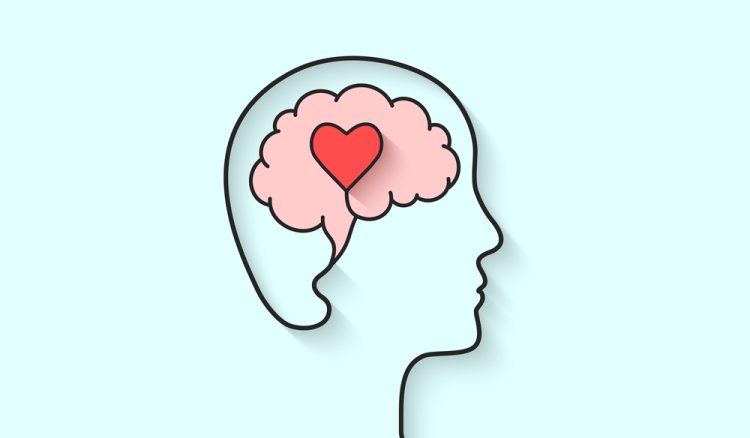9 CBT Techniques for Better Mental Health

Cognitive behavioral therapy, or CBT, is a common form of talk therapy. Unlike some other therapies, CBT is typically intended as a short-term treatment, taking anywhere from a few weeks to a few months to see results.
Although the past is certainly relevant, CBT focuses on providing you with tools to solve your current problems. And there a lot of ways to get there with this type of therapy.
Here’s a look at some of the techniques used in CBT, what types of issues they address, and what to expect with CBT.
The key principle behind CBT is that your thought patterns affect your emotions, which, in turn, can affect your behaviors.
For instance, CBT highlights how negative thoughts can lead to negative feelings and actions. But, if you reframe your thoughts in a more positive way, it can lead to more positive feelings and helpful behaviors.
Your therapist will teach you how to make changes you can implement right now. These are skills you can continue to use for the rest of your life.
Depending on the issue you’re dealing with and your goals, there are several ways to approach CBT. Whatever approach your therapist takes, it will include:
- identifying specific problems or issues in your daily life
- becoming aware of unproductive thought patterns and how they can impact your life
- identifying negative thinking and reshaping it in a way that changes how you feel
- learning new behaviors and putting them into practice
After speaking with you and learning more about the issue you want help with, your therapist will decide on the best CBT strategies to use.
Some of the techniques that are most often used with CBT include the following 9 strategies:
1. Cognitive restructuring or reframing
This involves taking a hard look at negative thought patterns.
Perhaps you tend to over-generalize, assume the worst will happen, or place far too much importance on minor details. Thinking this way can affect what you do and it can even become a self-fulfilling prophecy.
Your therapist will ask about your thought process in certain situations so you can identify negative patterns. Once you’re aware of them, you can learn how to reframe those thoughts so they’re more positive and productive.
For example: “I blew the report because I’m totally useless” can become “That report wasn’t my best work, but I’m a valuable employee and I contribute in many ways.”
2. Guided discovery
In guided discovery, the therapist will acquaint themselves with your viewpoint. Then they’ll ask questions designed to challenge your beliefs and broaden your thinking.
You might be asked to give evidence that supports your assumptions, as well as evidence that does not.
In the process, you’ll learn to see things from other perspectives, especially ones that you may not have considered before. This can help you choose a more helpful path.
3. Exposure therapy
Exposure therapy can be used to confront fears and phobias. The therapist will slowly expose you to the things that provoke fear or anxiety, while providing guidance on how to cope with them in the moment.
This can be done in small increments. Eventually, exposure can make you feel less vulnerable and more confident in your coping abilities.
4. Journaling and thought records
Writing is a time-honored way of getting in touch with your own thoughts.
Your therapist may ask you to list negative thoughts that occurred to you between sessions, as well as positive thoughts you can choose instead.
Another writing exercise is to keep track of the new thoughts and new behaviors you put into practice since the last session. Putting it in writing can help you see how far you’ve come.
5. Activity scheduling and behavior activation
If there’s an activity you tend to put off or avoid due to fear or anxiety, getting it on your calendar can help. Once the burden of decision is gone, you may be more likely to follow through.
Activity scheduling can help establish good habits and provide ample opportunity to put what you’ve learned into practice.
6. Behavioral experiments
Behavioral experiments are typically used for anxiety disorders that involve catastrophic thinking.
Before embarking on a task that normally makes you anxious, you’ll be asked to predict what will happen. Later, you’ll talk about whether the prediction came true.
Over time, you may start to see that the predicted catastrophe is actually not very likely to happen. You’ll likely start with lower-anxiety tasks and build up from there.
7. Relaxation and stress reduction techniques
In CBT, you may be taught some progressive relaxation techniques, such as:
- deep breathing exercises
- muscle relaxation
- imagery
You’ll learn practical skills to help lower stress and increase your sense of control. This can be helpful in dealing with phobias, social anxieties, and other stressors.
8. Role playing
Role playing can help you work through different behaviors in potentially difficult situations. Playing out possible scenarios can lessen fear and can be used for:
- improving problem solving skills
- gaining familiarity and confidence in certain situations
- practicing social skills
- assertiveness training
- improving communication skills
9. Successive approximation
This involves taking tasks that seem overwhelming and breaking them into smaller, more achievable steps. Each successive step builds upon the previous steps so you gain confidence as you go, bit by bit.
In your first session, you’ll help the therapist understand the problem you’re dealing with and what you hope to achieve with CBT. The therapist will then formulate a plan to achieve a specific goal.
Goals should be:
- Specific
- Measurable
- Achievable
- Realistic
- Time-limited
Depending on your situation and your SMART goals, the therapist might recommend individual, family, or group therapy.
Sessions generally last about an hour and take place once a week, though this can vary according to individual needs and availability.
Homework is also part of the process, so you’ll be asked to fill out worksheets, a journal, or perform certain tasks between sessions.
Open communication and feeling comfortable with your therapist are key. If you don’t feel completely comfortable with your therapist, try to find a therapist you can connect with and open up to more easily.
Look for a therapist who’s trained in CBT and who has experience treating your specific problem. Check to make sure they’re properly certified and licensed.
You may want to talk to your doctor or other healthcare providers for recommendations. Practitioners may include:
- psychiatrists
- psychologists
- psychiatric nurse practitioners
- social workers
- marriage and family therapists
- other professionals with mental health training
Most of the time, CBT takes a few weeks to a few months to start seeing results.
CBT can help with a variety of everyday problems, such as learning to cope with stressful situations or dealing with anxiety over a certain issue.
You don’t need a medical diagnosis to benefit from CBT.
It can also help with:
- learning to manage powerful emotions like anger, fear, or sadness
- dealing with grief
- managing symptoms or preventing mental illness relapses
- coping with physical health problems
- conflict resolution
- improving communication skills
- assertiveness training
CBT can be effective for a variety of conditions, either alone or in combination with other therapies or medications. This includes:
- addictions
- anxiety disorders
- bipolar disorders
- chronic pain
- depression
- eating disorders
- obsessive-compulsive disorder (OCD)
- phobias
- post-traumatic stress disorder (PTSD)
- schizophrenia
- sexual disorders
- sleep disorders
- tinnitus
CBT is not generally considered a risky therapy, though there are some things to keep in mind:
- It’s a very individual thing, but in the beginning, some people might find it stressful or uncomfortable to confront their problems.
- Some types of CBT, like exposure therapy, can increase stress and anxiety while you’re working your way through it.
- It doesn’t work overnight. It takes commitment and willingness to work on new techniques between sessions and after therapy has ended. It’s helpful to think of CBT as a lifestyle change that you intend to follow and improve upon throughout your life.
Cognitive behavioral therapy (CBT) is a well-established, effective type of short-term therapy. It’s based on the connections between your thoughts, emotions, and behaviors, and how they can influence each other.
There are quite a few techniques that are used with CBT. Depending on the type of issue you want help with, your therapist will help figure out which CBT strategy is best suited to your particular needs.










